overleaf template galleryCommunity articles — Recent
Papers, presentations, reports and more, written in LaTeX and published by our community.
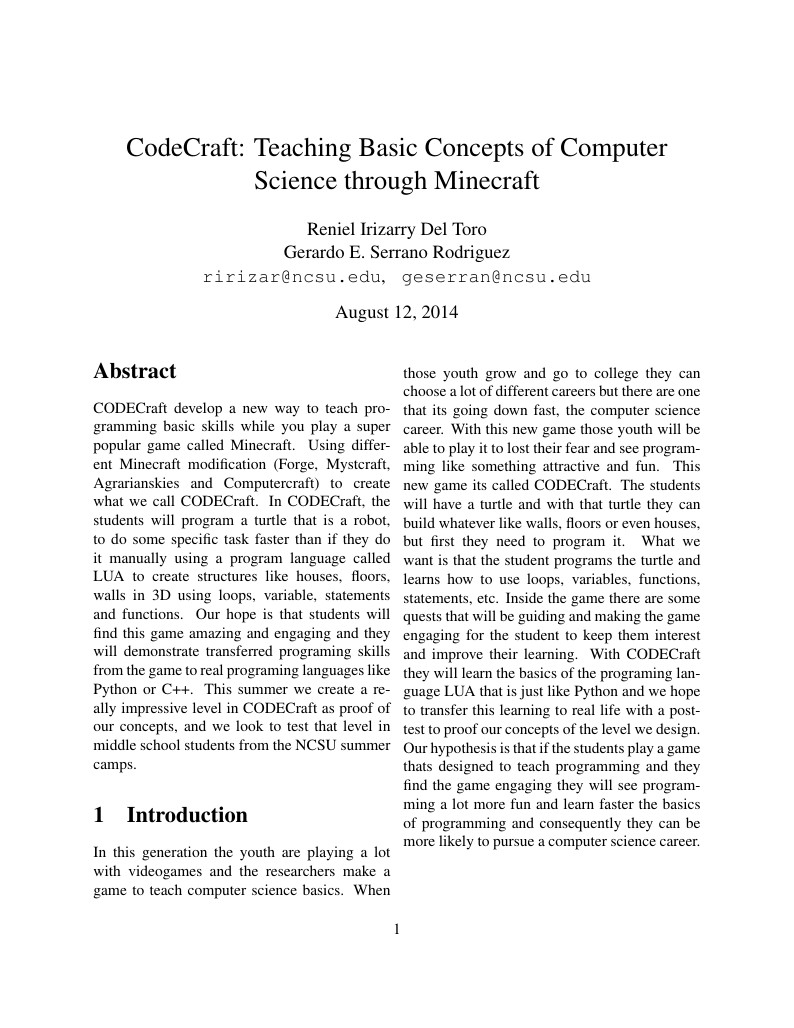
CODECraft develop a new way to teach programming basic skills while you play a super popular game called Minecraft. Using different Minecraft modification (Forge, Mystcraft, Agrarianskies and Computercraft) to create what we call CODECraft. In CODECraft, the students will program a “turtle “that is a robot, to do some specific task faster than if they do it manually using a program language called LUA to create structures like houses, floors, walls in 3D using loops, variable, statements and functions. Our hope is that students will find this game amazing and engaging and they will demonstrate transferred programing skills from the game to real programing languages like Python or C++. This summer we create a really impressive level in CODECraft as proof of our concepts, and we look to test that level in middle school students from the NCSU summer camps.
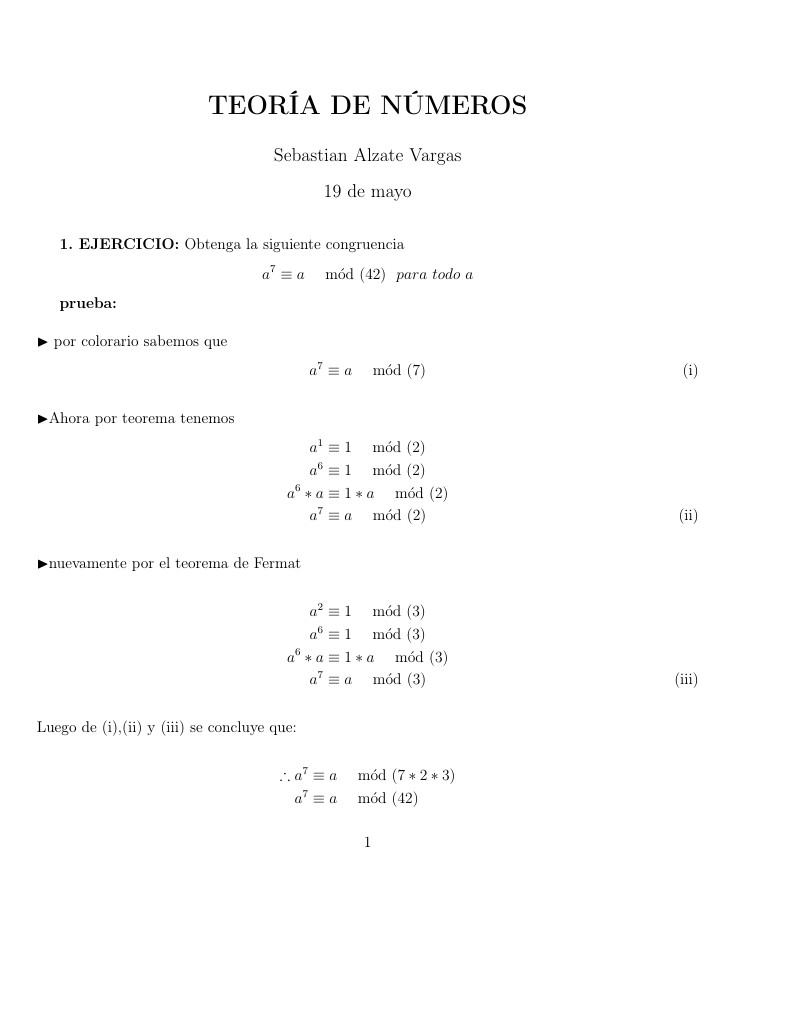
Teoría de números
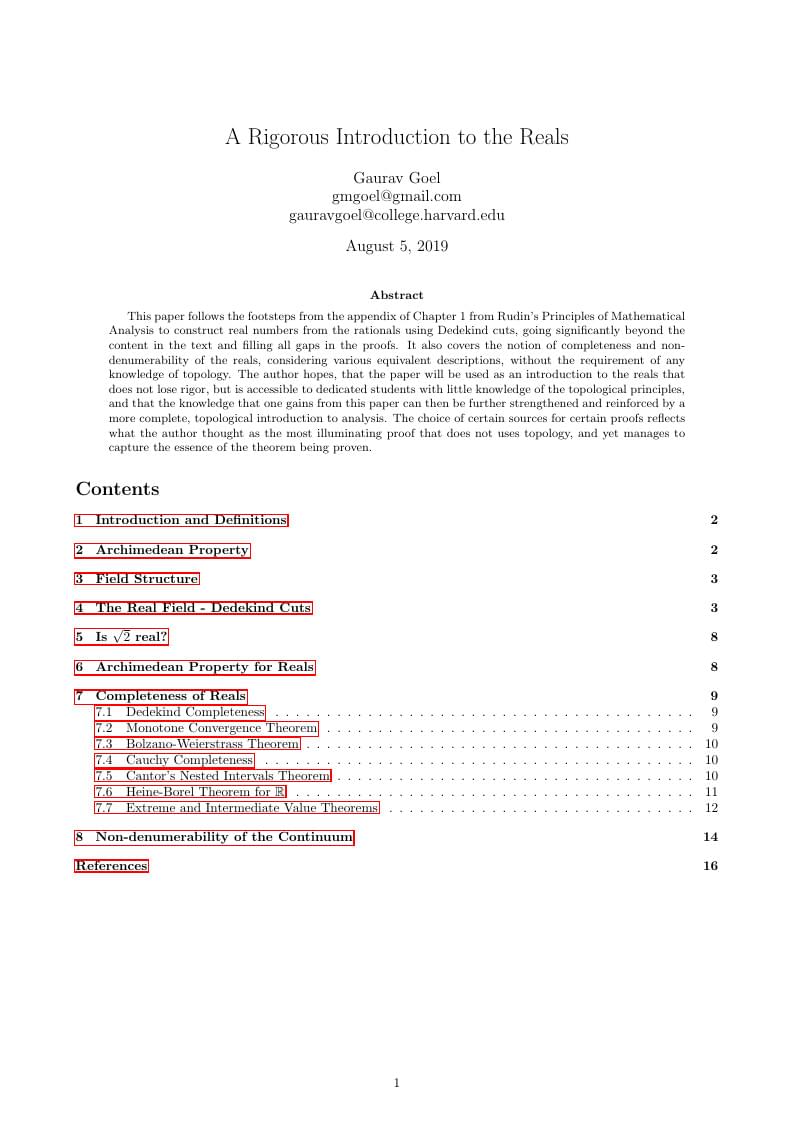
A rigorous construction of the field of real numbers: the unique (up to isomorphism) completely ordered field with the least upper bound property; along with various formulations of completeness and with a postlude on the measure of sets.
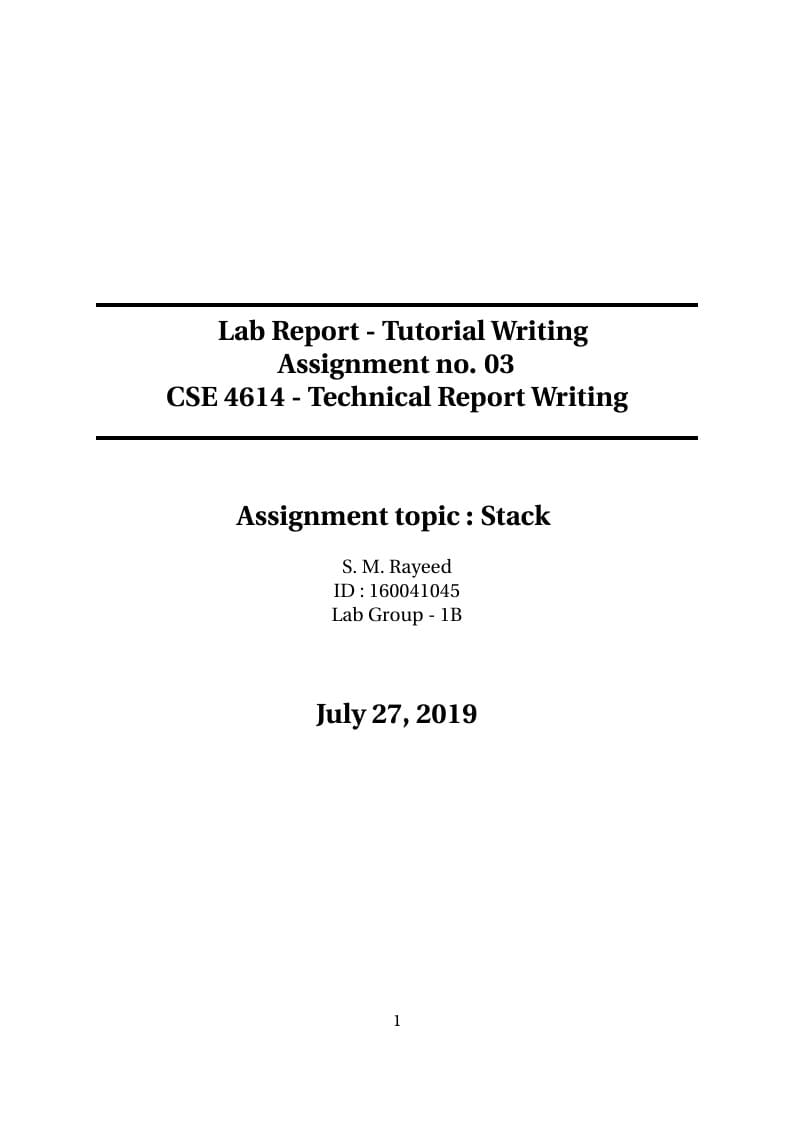
Its about a tutorial on Stack - a very popular data structure ...
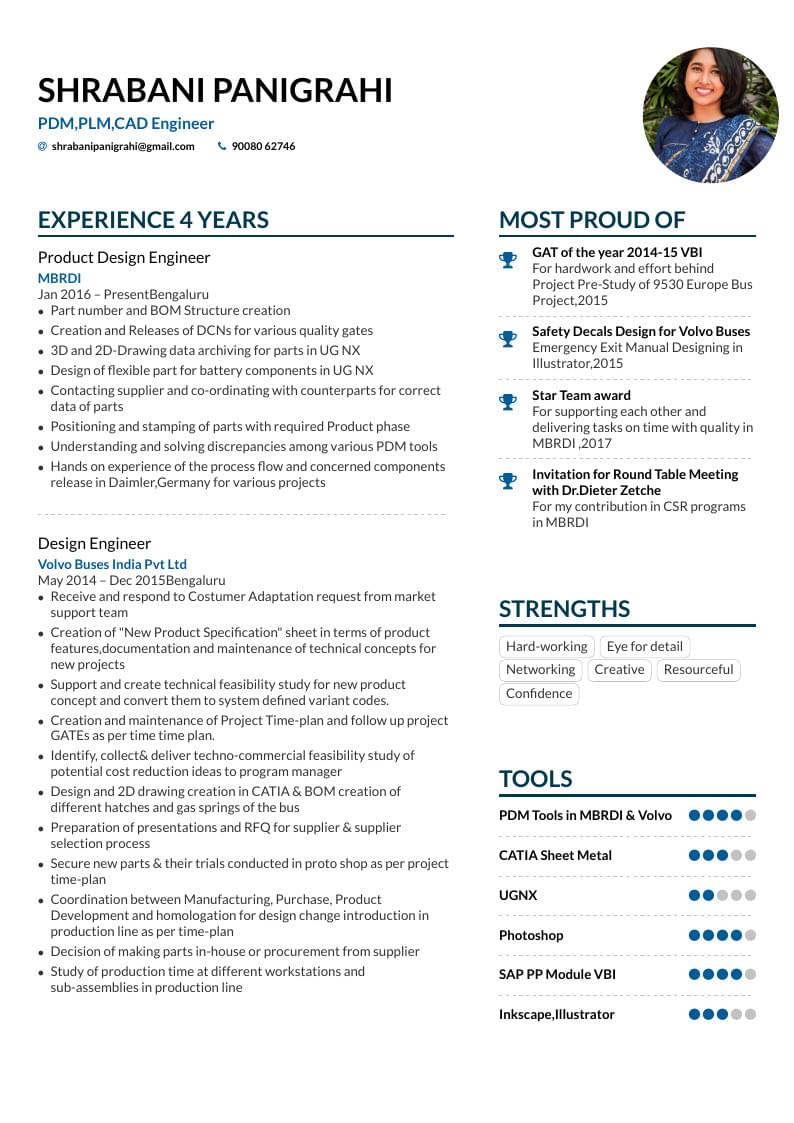
I have taken reference from the AltaCV template and modified it according to my requirements.
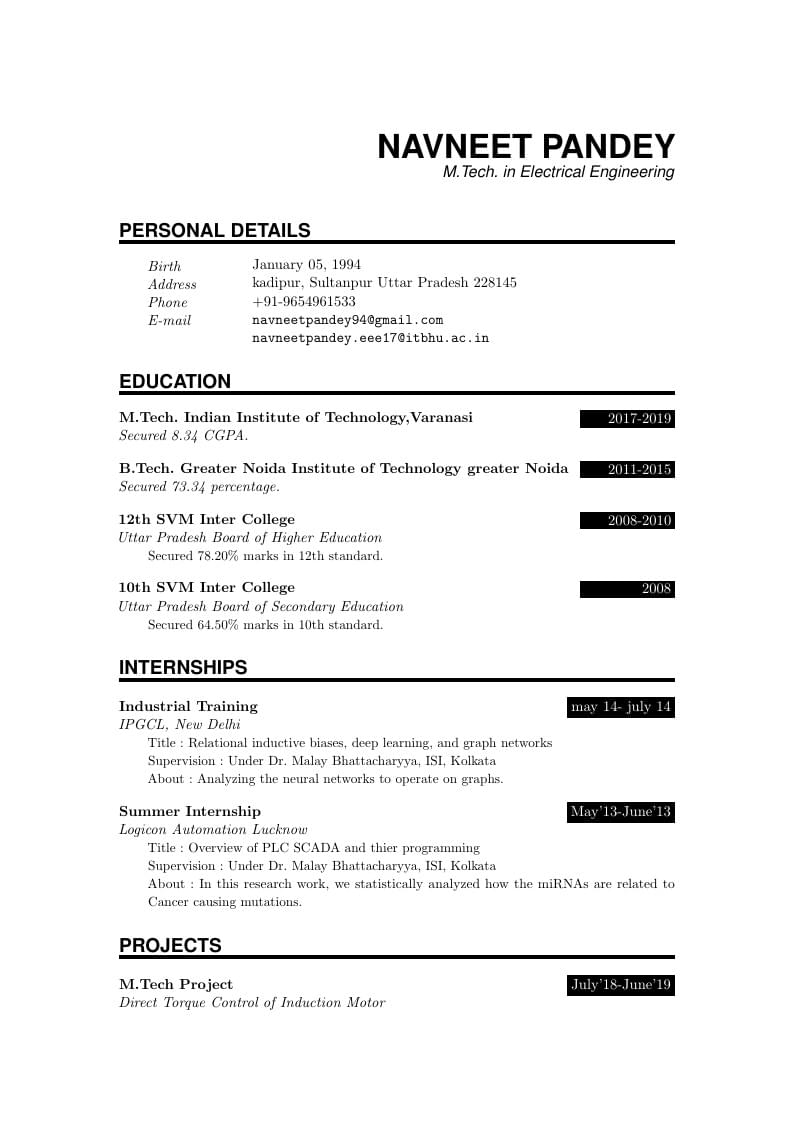
Navneet Pandey's Résumé
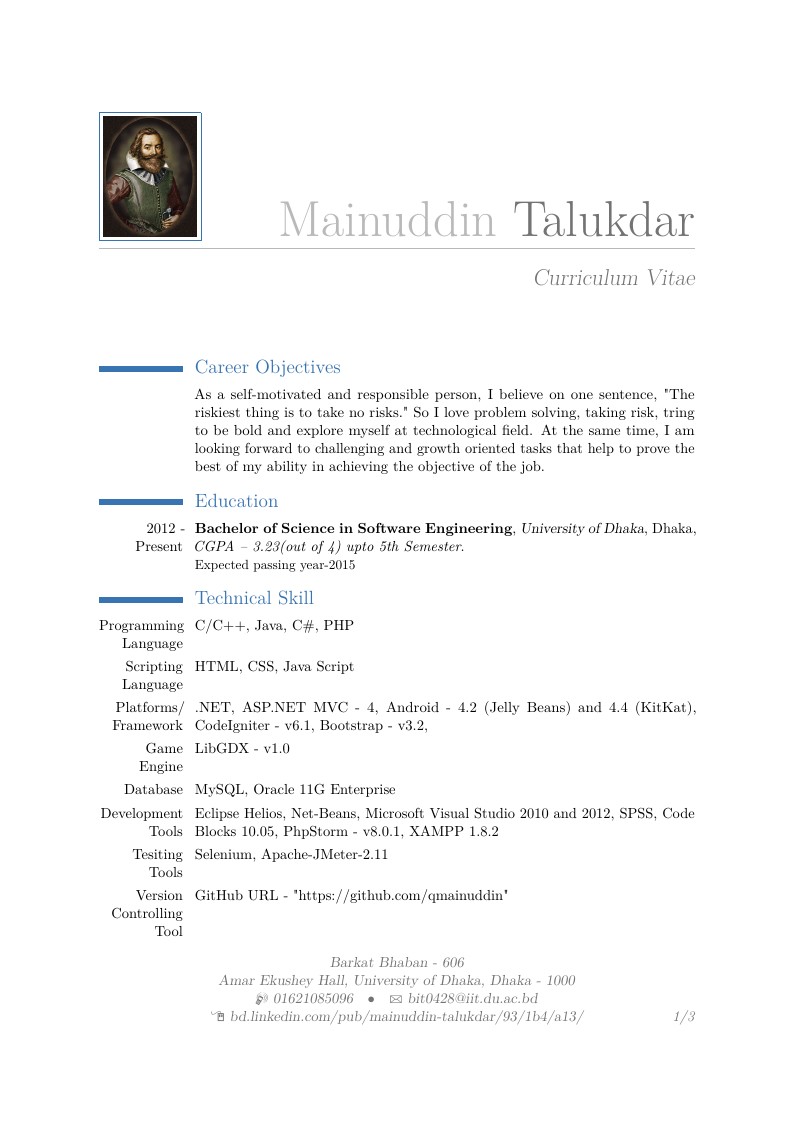
"ModernCV" CV and Cover Letter LaTeX Template Version 1.1 (9/12/12) This template has been downloaded from: http://www.LaTeXTemplates.com Original author: Xavier Danaux (xdanaux@gmail.com) License: CC BY-NC-SA 3.0 (http://creativecommons.org/licenses/by-nc-sa/3.0/) Important note: This template requires the moderncv.cls and .sty files to be in the same directory as this .tex file. These files provide the resume style and themes used for structuring the document.
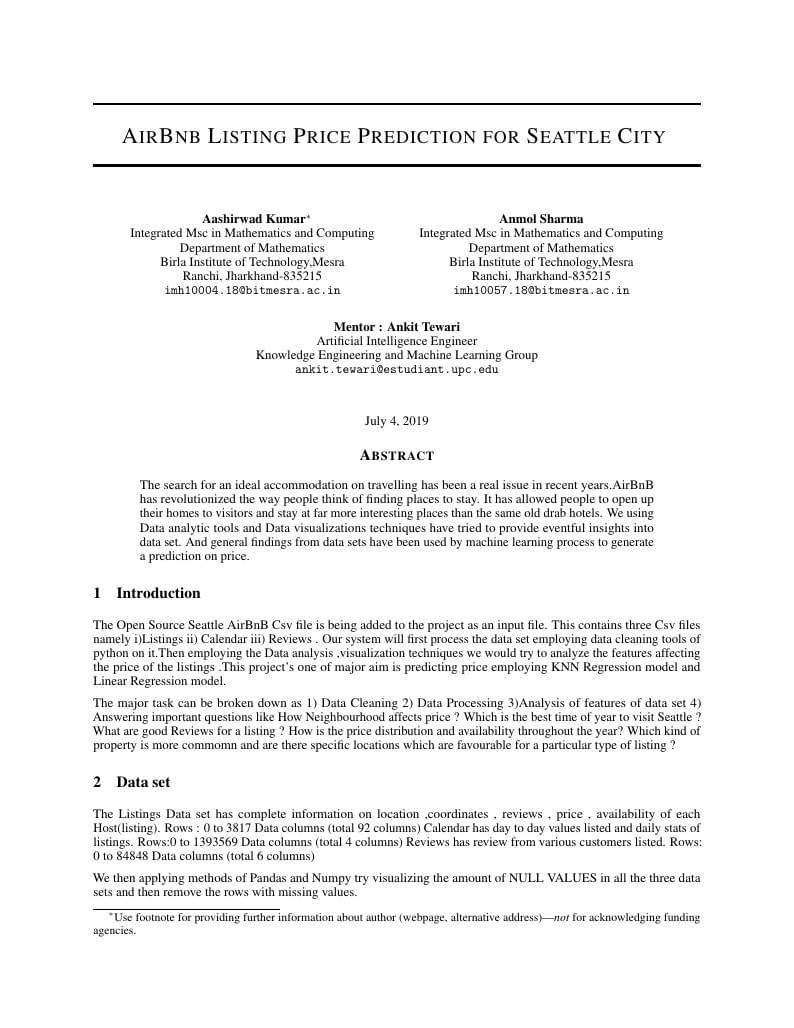
A comprehensive report on Data Analysis and Machine Learning project on Listings of Seattle City. Drawing important analytic and visualizing inferences on the data set using analysis and visualization tools. And predicting future price of listings based on common features.
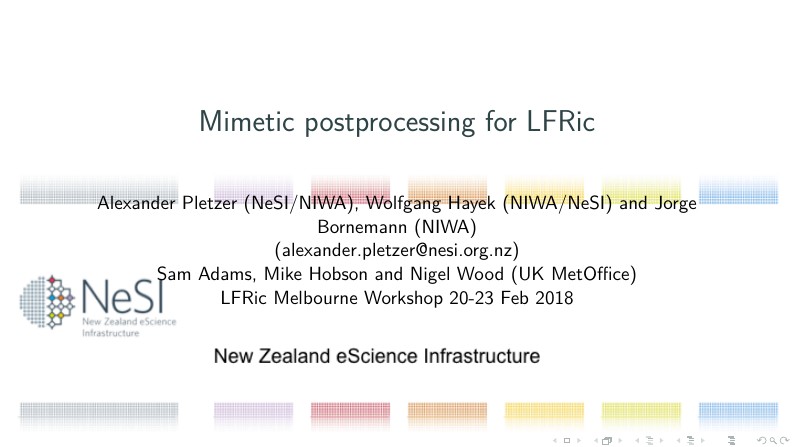
We describe what mimetic interpolation is and why it is critical for some pre- and post-processing tasks. A simple test case shows how using bilinear interpolation for a flux calculation introduces numerical errors that depend on the grid, the number of segments and the number of quadrature points. In contrast, mimetic interpolation will return the exact result regardless of the grid resolution and the number of segments.
\begin
Discover why over 20 million people worldwide trust Overleaf with their work.